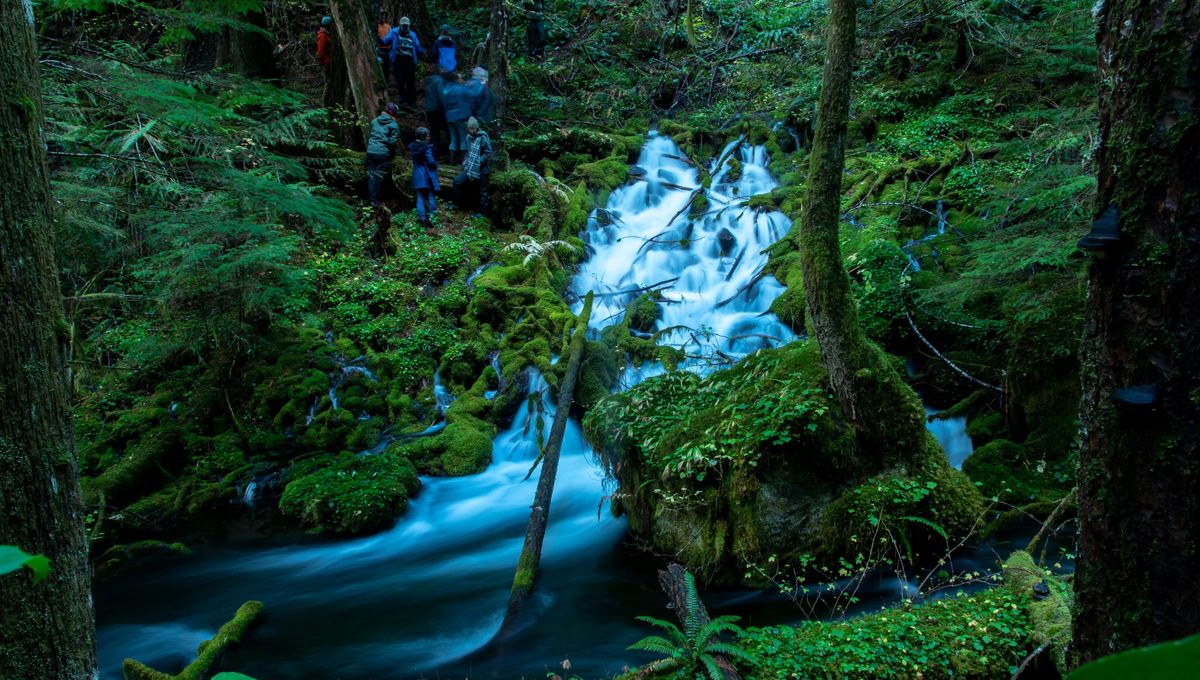
An enormous body of water has been found in volcanic rocks below the peak of the Oregon Cascade Range. The volume is so large, the push to use it to address regional water shortages is likely to come quickly, but the solution is not that easy. Meanwhile the proximity to slumbering volcanoes could have implications for the type of eruptions Oregonians should expect.
The LA fires are just one symptom of the growing shortage of water in the American West. Some 20 million people depend for much of their water on Lake Mead, which holds 32 cubic kilometers (7.7 cubic miles) of water when full, but hasn’t been for 40 years. In that context, the discovery of an unnamed aquifer holding an estimated 81 cubic kilometers (19.4 cubic miles) of water sounds like it could be an answer to water managers’ prayers. “It is a continental-size lake stored in the rocks at the top of the mountains, like a big water tower,” said Dr Leif Karlstrom of the University of Oregon in a statement.
So the West is saved? Water for all? Well, no. The volume of water is not the only thing that matters. For example, Australia’s Great Artesian Basin contains almost a thousand times as much water, but it hasn’t saved that continent from frequent droughts. Its water recharges so slowly that much of it is almost two million years old: once used it will not refill on human timescales.
Kalstrom warns the newly discovered aquifer also needs to be treated as a non-renewable resource. “It is a big, active groundwater reservoir up there right now, but its longevity and resilience to change is set by the availability of recharging waters,” he said. The main source of that recharge is the Cascades snowpack, which has been declining along with precipitation in the rest of the American West.
“This region has been handed a geological gift, but we really are only beginning to understand it,” said the US Forest Service’s Dr Gordon Grant. “If we don’t have any snow, or if we have a run of bad winters where we don’t get any rain, what’s that going to mean? Those are the key questions we’re now having to focus on.”
Even if only a fraction of the water can be used, the discovery could matter for other reasons.
Karlstrom, Grant, and co-authors note that when magma erupts in dry conditions it usually turns to lava at the surface. Interactions with underground water can instead create explosions of gas and ash, with consequences much further afield.
Seventeen years ago, Grant made a similar discovery further south and crossing into California. Karlstrom says these and other finds collectively “likely make the Cascade Range the largest aquifer of its kind in the world.”
Despite his previous discovery, Grant said the team were not expecting to come across something like this, and certainly not looking for it. “We initially set out to better understand how the Cascade landscape has evolved over time, and how water moves through it,” Grant said. The High Cascades are younger than the range to the west, and the transition zone is key to understanding the region’s geologic history, and similar ranges elsewhere.
“But in conducting this basic research, we discovered important things that people care about: the incredible volume of water in active storage in the Cascades and also how the movement of water and the hazards posed by volcanoes are linked together.”
The team found that in the Western Cascades the Critical Zone, where the atmosphere influences geological developments, is sometimes just meters deep. In the high Cascades, however, it can extend down more than a kilometer (0.6 miles), as fissures allow the water to weather rocks to great depths.
The discovery was made using drilling data from the 1980s and 90s, when geologists were measuring the underground temperatures in the hope of finding usable sources of geothermal energy. Had they found an uninterrupted body of water the aquifer would be old news, but instead it exists in a network of cracks spanning a vast area beneath the High Cascades.
Water serves to even out the temperatures of rocks, so the authors used the measurements of areas where underground temperatures were consistent to map the extent of the aquifer’s tendrils.
The study is published in Proceedings of the National Academy of Sciences.
Source Link: A Giant Aquifer Discovered Beneath Oregon Could Reshape Future Volcanic Eruptions